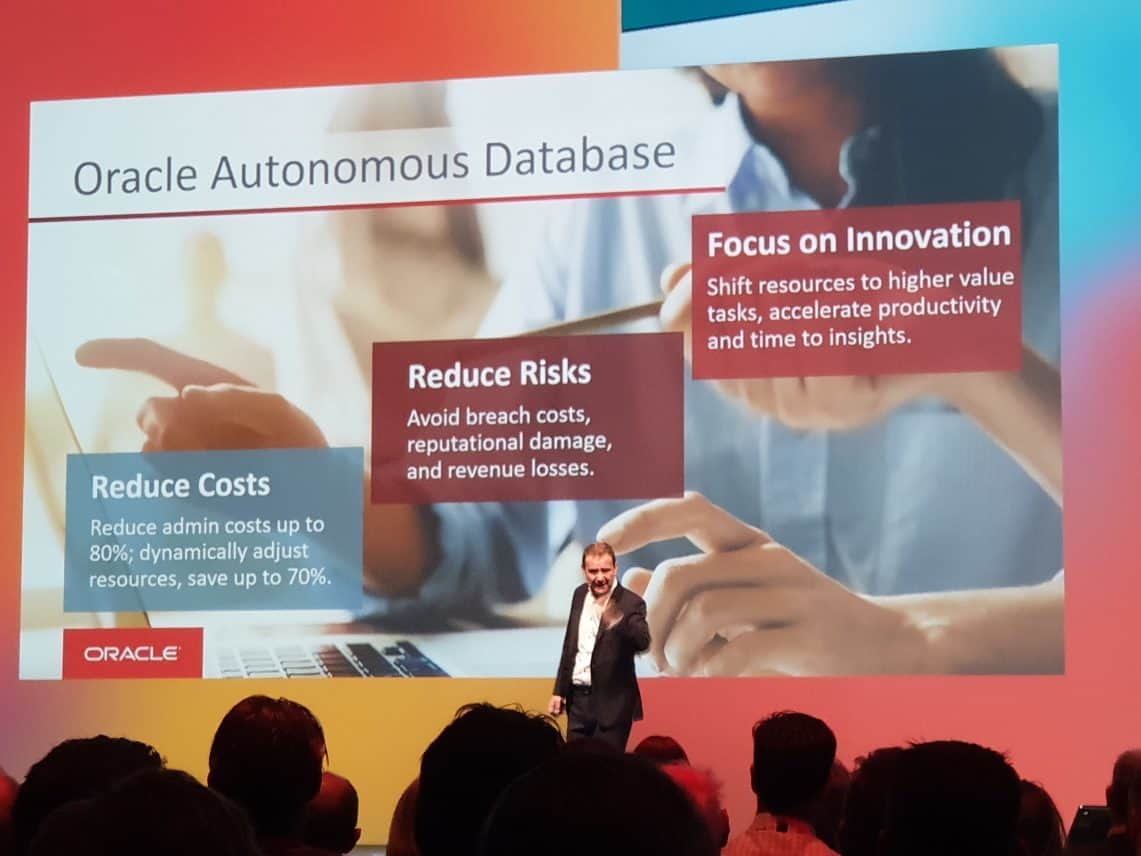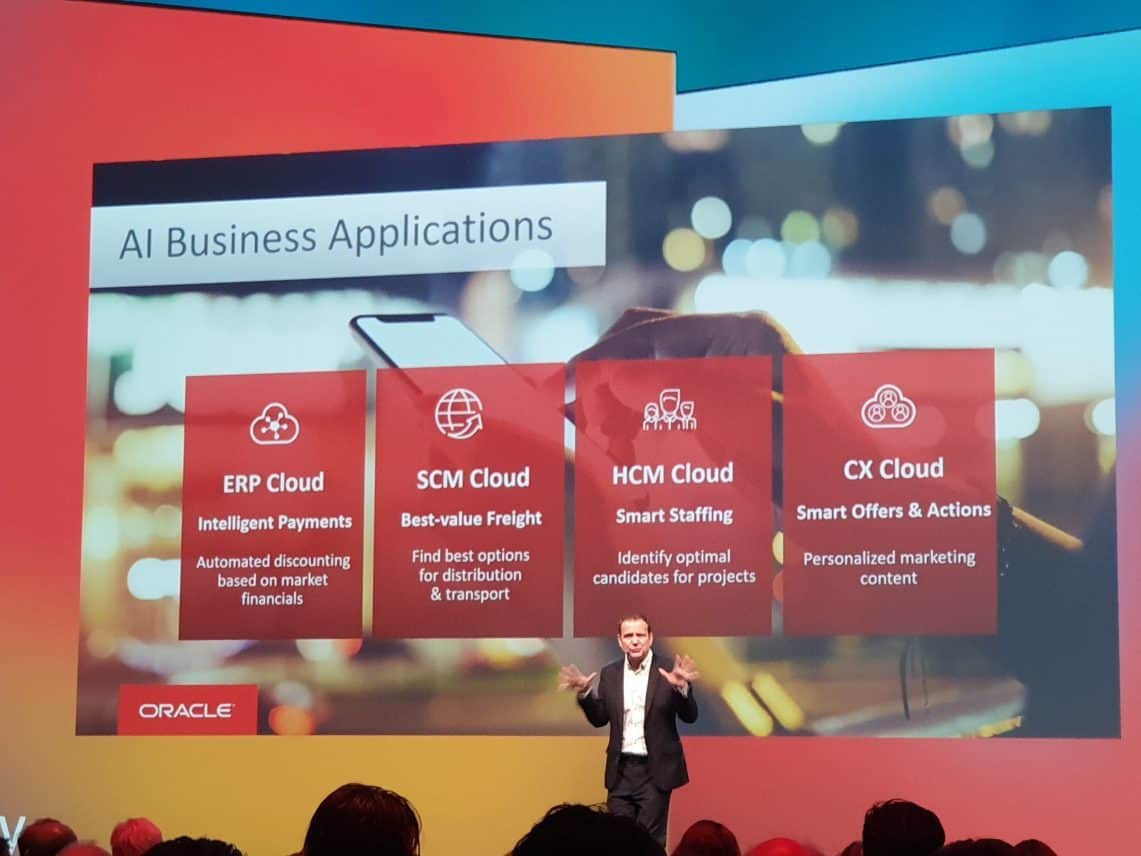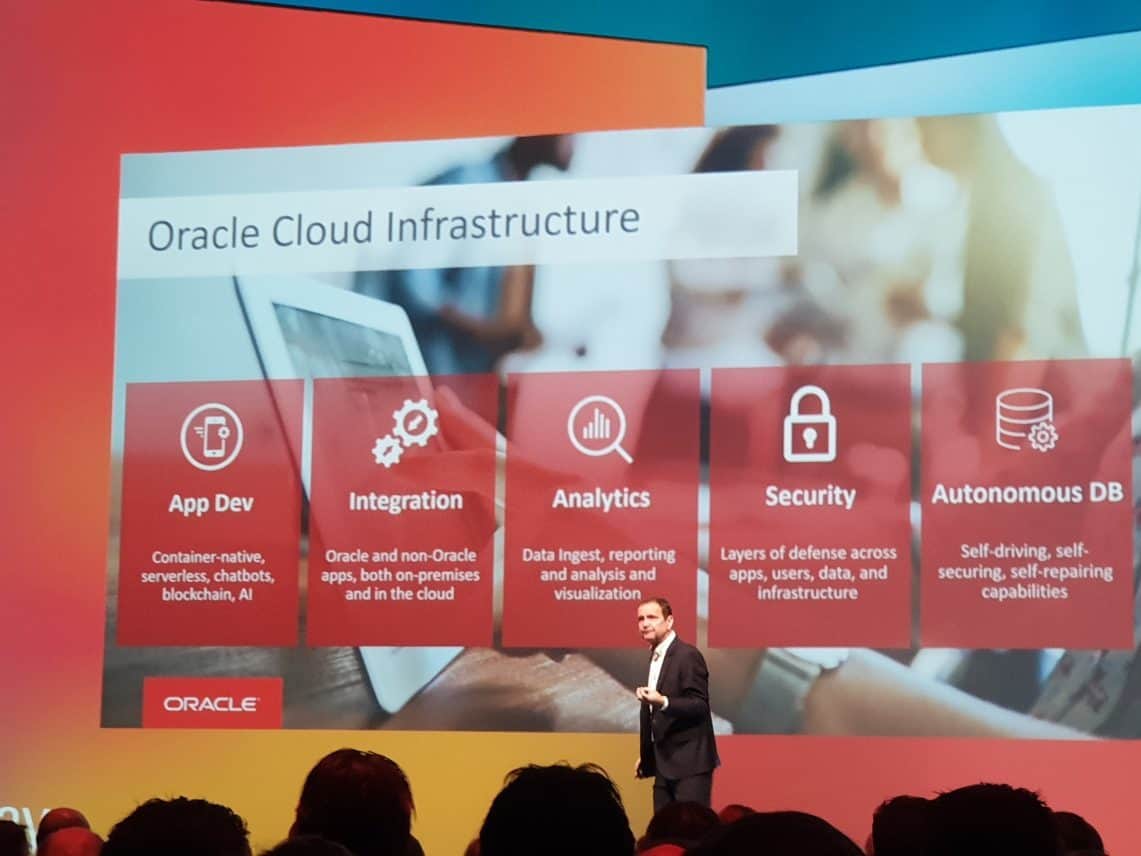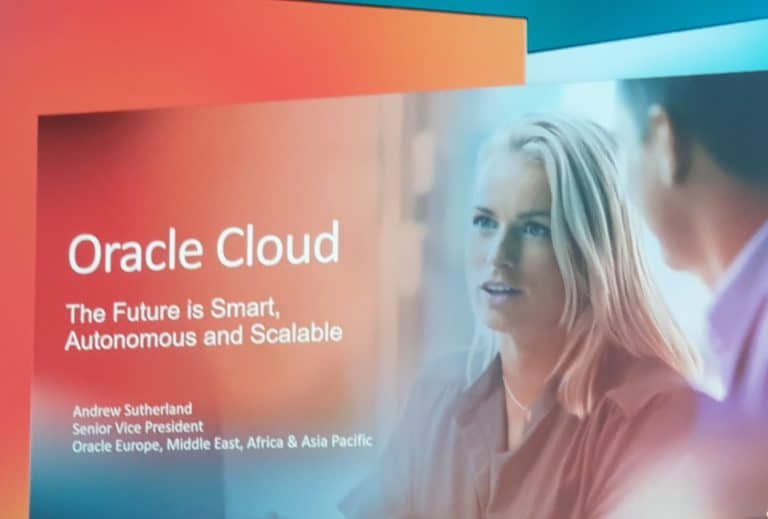After our presence in San Francisco at Oracle Open World last year, we now attended the local Dutch edition. During Oracle Cloud Day, Dutch partners and customers were updated on the developments surrounding Oracle Cloud. Oracle really discussed the vision and developments around Oracle Cloud.
During a local Oracle Cloud Day in Nieuwegein (the Netherlands), Andrew Sutherland, senior vice president systems and technology EMEA and APAC at Oracle, gave the most important keynote talk. It was about developments in and around the Oracle Cloud, SaaS applications, the Autonomous Database and the cloud infrastructure. Although most of what he said was not entirely new to us, it all came together nicely. This is something Oracle had a lot of trouble with during Open World in the United States.
Oracle seems to have done something with the criticism they received at Open World. In the US, Larry Ellison spoke more about how bad the competition is than about Oracle’s own products. During this edition of Oracle Cloud Day, it was really only about Oracle, and the competition was never mentioned by name.
“More innovation takes place in a month now than 20 years ago in a whole year”
Sutherland opened his keynote talk on Oracle Cloud Day emphasizing that innovation today is faster than ever before. Sometimes we have the feeling that as we get older, everything goes around us faster. That may be true, but the reality is that the speed of innovation has also increased considerably in recent years. In the 1990s and ’00s, we laid the foundations, the infrastructure, to enable today’s high speed of innovation.
According to Sutherland, more innovation takes place in a month today than 20 years ago in a whole year.
Oracle looks at everything from a data-first perspective
At Oracle, almost the entire vision can ultimately be reduced to one core product, the Oracle Database. During the Oracle Cloud Day, this product was very central. This has to do with the fact that everything is viewed from a data perspective, and new products are developed from that perspective. Nowadays, however, Oracle no longer talks about the database, but preferably about the Oracle Autonomous Data Warehouse.

The on-premise Oracle database still exists, but the future of the Oracle Autonomous Data Warehouse lies in the cloud. We have written about this Autonomous Data Warehouse before. In short, it means that this database is completely autonomous. The database manager controls who has access to the database, and everything else can be arranged autonomously. The database optimizes itself, creates its own indexes and keys and requires much less hardware than before. This is all done on the basis of machine learning and artificial intelligence, something in which Oracle has invested heavily.
“Data is the new laboratory”.
By using the Oracle Autonomous Data Warehouse it is also much easier to read data. This can also be done very quickly. Many enterprise companies with outdated environments still spend an enormous amount of time on this because those processes are not optimized. The Autonomous Database does this automatically. Because all data is available at high speed, other applications can make active use of it, and according to Sutherland, this makes data the laboratory of the future. No test tubes and bowls, but data.
Oracle offers a wide range of tools to make optimal use of data
With this new “data laboratory”, Oracle is able to deliver large amounts of data in no time at all. Something still needs to be done about this in order to benefit from it. Sutherland states that everything in the Oracle Cloud is aimed at providing tools that can convert data into new insights, cost savings, risk reduction, optimizations and, ultimately, innovation.

Oracle has large applications such as ERP Cloud, SCM Cloud and HCM Cloud, which make this possible, and for which the Autonomous Data Warehouse is the basis. Some examples are given below.
(article continues after the examples)
Oracle ERP Cloud
Oracle ERP Cloud (Enterprise Resource Planning) aims to make work more efficient, monitor workflows and optimize processes. By adding artificial intelligence, Oracle can give advice based on real-time data and detect possible problems. Sutherland mentions as an example that ERP itself can automatically determine prices based on market information.
Oracle SCM Cloud
Oracle SCM Cloud (Supply Chain Management) is of course aimed at managing and planning suppliers’ flows of goods. Oracle has also added the necessary AI to advise the customer on the basis of the available data. For example, what the best way of transport is, taking into account delivery time, costs and history. The more data there is, the better this advice will be. For companies that depend on a stable supply of goods, this has great value.
Oracle HCM Cloud
Oracle HCM Cloud (Human Capital Management) offers a complete solution for the HR department of a company. Many companies nowadays choose the strategy of working with many small teams to tackle problems and innovate. When forming these kinds of teams, it is important to choose the right team members. By using HCM Cloud and assessing each employee after completed projects, a clear profile can be built from which conclusions can be drawn by means of AI. In this way, the software can also advise on the composition of a new team.
Complete data services and infrastructure solutions
In addition to these types of large SaaS applications, Oracle also offers various data services that can make use of data. Think, for example, of developing container applications, chatbots and blockchain solutions. Integrating and bringing together data from different applications is also possible with the Oracle Cloud. All these applications, chatbots and integrations offer new data sets that can be analyzed by means of the Oracle Analytics Cloud Service. Companies usually use a data scientist to do the right analyses. Oracle tries to minimize the need for this by, again, adding AI to its analytics product.
Infrastructure for all other (existing) workloads
Finally, like all other major hyper scalers, Oracle offers a large IaaS portfolio. Customers can migrate their infrastructure to the Oracle Cloud. This is based on bare metal servers, where the control plane is physically separated from the customer server. This allows customers to migrate all their workloads to the Oracle Cloud. During the Oracle Cloud Day, the company shows that it is not yet a major player in IaaS and that many customers also use other hyper scalers for IaaS. Oracle does offer it, however. Multi-cloud is possible, but not necessary.

An important advantage of the Oracle IaaS portfolio that Sutherland highlights is the focus on customers with Oracle databases. Customers using applications running on an Oracle database can easily be migrated to the Oracle Cloud. The application can be virtualized on the IaaS platform, while the database can be migrated to the Oracle Autonomous Data Warehouse. This often allows companies to save costs because database management is no longer necessary. This saves the necessary personnel and management costs. In addition, the company pays for the use of the Oracle database. If it concerns a small application, costs can also be saved there. Another advantage is that all AI services, and, for example, the analytics platform can be released on the data in the Oracle database.
Oracle Cloud tries to convince business cases
While other hyper scalers focus mainly on developers, large PaaS platforms and applications, Oracle really chooses for the business. What problems and challenges do large enterprise organizations face, and what cloud solutions can Oracle develop or provide to make it easier? This vision was clearly expressed during the Oracle Cloud Day. Hopefully, the company will hold on to this policy. While other hyper scalers focus mainly on developers, large PaaS platforms and applications, Oracle really chooses to focus on businesses. What problems and challenges do large enterprise organizations face, and what cloud solutions can Oracle develop or provide to make it easier? This vision was clearly expressed during the Oracle Cloud Day. Hopefully, the company will hold on to this line.
